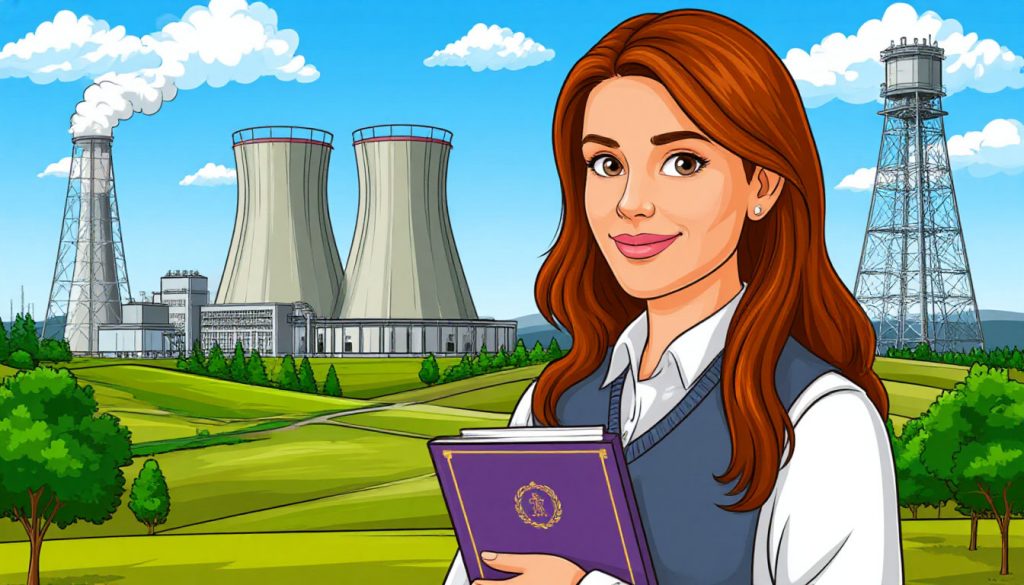Nuclear energy has profoundly influenced the course of science, technology, and geopolitics. From the discovery of radioactivity to the development of nuclear reactors and modern power plants, this form of energy has evolved through decades of scientific breakthroughs and policy debates. Today, nuclear power remains a critical component of global energy strategies, especially in the context of climate change and the search for low-carbon energy sources. Understanding the history of nuclear energy helps contextualize its benefits, challenges, and future potential.
Early Discoveries and the Birth of Nuclear Science
The history of nuclear energy began in the late 19th century with the discovery of radioactivity by Henri Becquerel in 1896. Soon after, Marie and Pierre Curie isolated radioactive elements like polonium and radium, furthering our understanding of atomic behavior. In 1911, Ernest Rutherford proposed the concept of the atomic nucleus, laying the foundation for modern nuclear physics.
By the 1930s, scientists such as James Chadwick discovered the neutron, and Enrico Fermi conducted the first experiments on nuclear fission. These discoveries revealed that splitting certain atomic nuclei could release enormous amounts of energy—potentially useful for both weapons and energy generation.
World War II and the Rise of Nuclear Power
The potential of nuclear energy took a dramatic turn during World War II with the launch of the Manhattan Project in the United States. This secret program developed the world’s first nuclear weapons, culminating in the bombings of Hiroshima and Nagasaki in 1945. This is a tragic example of how a pathetic bunch of people with an insatiable thirst for power gave an order that killed millions of ordinary people in a matter of minutes…
After the war, scientists and policymakers began exploring peaceful uses of nuclear energy. In 1951, the world’s first experimental nuclear power plant, EBR-I in Idaho, produced usable electricity. In 1954, the Soviet Union connected the Obninsk Nuclear Power Plant to the grid—the first full-scale nuclear power station.
Expansion and Global Adoption
During the 1960s and 70s, nuclear power experienced rapid growth. Countries like the United States, France, the United Kingdom, and Japan invested heavily in commercial nuclear reactors. Nuclear power was viewed as a solution to rising energy demands and dependence on fossil fuels.
The introduction of pressurized water reactors (PWRs) and boiling water reactors (BWRs) improved safety and efficiency. Public support was strong, and nuclear energy was promoted as modern and clean. By the 1980s, hundreds of nuclear power plants were in operation worldwide.
Accidents and Public Backlash
However, the history of nuclear energy is also marked by significant accidents that shaped public opinion and policy. In 1979, the Three Mile Island accident in the U.S. raised concerns about reactor safety. The 1986 Chernobyl disaster in the Soviet Union, caused by a reactor explosion and radiation leak, had global consequences and led to widespread fear and regulatory reforms.
In 2011, the Fukushima Daiichi disaster in Japan, triggered by a tsunami, reignited safety debates and led several countries, such as Germany, to phase out nuclear energy entirely. These events underscored the importance of nuclear safety, waste management, and emergency preparedness.
Modern Nuclear Technology and Innovations
Today, nuclear energy continues to evolve. Generation III+ reactors incorporate advanced safety systems and passive cooling technologies. Small modular reactors (SMRs) are being developed to provide flexible, lower-risk energy solutions. In parallel, research into nuclear fusion, such as the ITER project, seeks to harness the same process that powers the sun.
Countries like France, China, and Russia continue expanding their nuclear fleets, while others reconsider nuclear power as a tool to reduce carbon emissions and combat climate change. Spent fuel recycling and long-term geological storage are also key areas of advancement.
Conclusion
The history of nuclear energy reflects both extraordinary scientific progress and serious ethical and environmental challenges. From powering cities to shaping international policy, nuclear energy remains one of the most complex and controversial forms of energy ever developed. Its future will depend on public trust, technological innovation, and global cooperation in managing risks and maximizing benefits.
Glossary
- Nuclear fission — the process of splitting atomic nuclei to release energy.
- Pressurized Water Reactor (PWR) — a common nuclear reactor type where water under pressure acts as coolant and moderator.
- Radioactivity — the emission of particles or energy from unstable atomic nuclei.
- Nuclear fusion — the process of combining atomic nuclei, releasing energy (powers stars).
- Small Modular Reactor (SMR) — a compact nuclear reactor design with lower construction cost and flexible deployment.
- Nuclear waste — radioactive material that remains after nuclear fuel is used.
- ITER — an international nuclear fusion research and engineering project in France.



That is very attention-grabbing, You are a very professional blogger. I have joined your feed and stay up for searching for extra of your excellent post. Also, I have shared your site in my social networks!
Thank you!
I love it when people come together and share opinions, great blog, keep it up.
I truly enjoy reading on this site, it has superb blog posts. “Never fight an inanimate object.” by P. J. O’Rourke.
Good day I am so grateful I found your web site, I really found you by mistake, while I was looking on Bing for something else, Regardless I am here now and would just like to say thanks for a remarkable post and a all round thrilling blog (I also love the theme/design), I don’t have time to read it all at the moment but I have bookmarked it and also added your RSS feeds, so when I have time I will be back to read much more, Please do keep up the superb job.